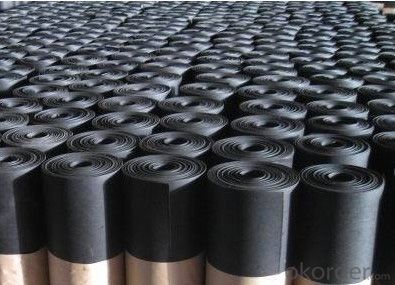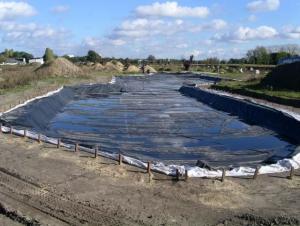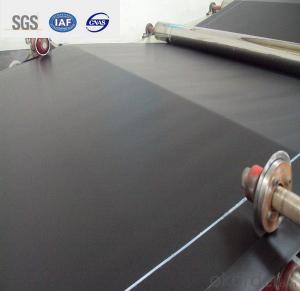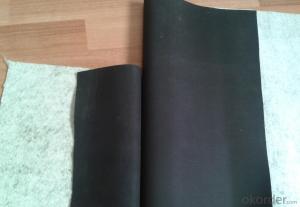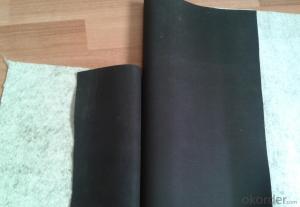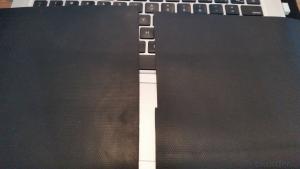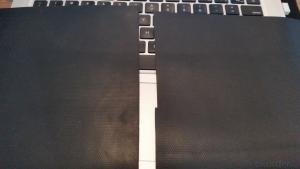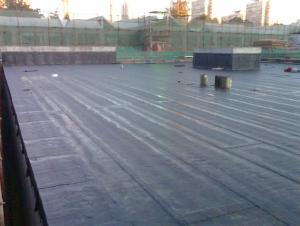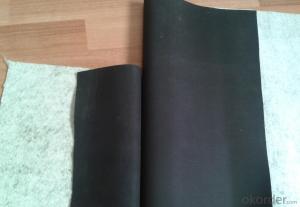EPDM Waterproofing Membrane with Wool Back
- Loading Port:
- Shanghai
- Payment Terms:
- TT OR LC
- Min Order Qty:
- 50000 m²
- Supply Capability:
- 5000000 m²/month
OKorder Service Pledge
OKorder Financial Service
You Might Also Like
EPDM Waterproofing Membrane with Wool Back
Description Of EPDM Waterproofing Membrane with Wool Back:
This waterproof coiled material is of high elasticity with best performance among high polymer waterproof coiled material in the world.It is also the most typical one in the world.Waterproof coiled material made of ternary ethylenepropylene rubber of KINTOPbrand is produced with the use of the most advanced continuous extrusion and vulcanization technology and related equipments which are specially designed for production of such product.It is good in compactness,without bubble and performance difference in length and breadth.
Main Features of EPDM Waterproofing Membrane with Wool Back:
1>Excellent anti-aging performance, service life up to 50 years
2>Working well with in -40°C to 100°C,it can be constructed with a single layer in ambient temperature.
3>Waterproofing on various kinds of underground project,industrial of civil buildings and structures.
4>high extension rate, high tensile strength, small size changes at heat treatment
5>Good plant roots penetrability resistance and can be made waterproofing layer of planting roof
6>Special modified molecular structure ,effectively resolving the current domestic and foreign glue
joint problem .
7>Good low temperature flexibility, and good performance of adapting to ambient temperature
changes.
8>Convenient application ,solid joint, no environment pollution
9>chemical corrosion Resistance, can be used for special occasions
Specifications of EPDM Waterproofing Membrane with Wool Back:
Type | EPDM Rubber Waterproof Membrane | ||
Type | Vulcanized and Weldable | ||
Thickness | 1.2mm | 1.5mm | 2.0mm |
Weight(kg/m2) | 1.54-1.58 | 1.79-1.83 | 2.25-2.29 |
Size | 1.2m (width) * 20m (length)/roll. Weldable type could be 4m wide. | ||
Packing | 24㎡/roll, with plastic bag. (Weldable: 80㎡/roll) | ||
Usage | Roof, basement, pond, Lake, steel structure roofing, underground, tunnel, etc | ||
NO. | Item | Unit | Technical requirement | |
1 | Tolerance on size | Thickness | % | ±10 |
Width | % | ±1 | ||
length | % | Does not allow negative | ||
2 | Fracture tensile strength (normal temperature ) | Mpa | ≥7.5 | |
Fracture tensile strength(60 ℃) | Mpa | ≥2.3 | ||
3 | Breaking elongation,(normal temperature ) | % | ≥450 | |
Breaking elongation,(-20 ℃) | % | ≥200 | ||
4 | Tearing resistance | KN/m | ≥25 | |
5 | Impermeability | * | 0.3Mpa impermeable | |
6 | Bending at low temperature | °C | ≤-40 | |
7 | Elongation and contraction volume at heating | Elongation | mm | ≤2 |
contraction | mm | ≤4 | ||
8 | Hot air aging 80°CX168h | Fracture strength retention | % | ≥80 |
Rate of elongation at break | % | ≥70 | ||
9 | Alkaline (saturated Ca(OH)2 solution normal Temperature x2 168h ) | Fracture strength retention | % | ≥80 |
Rate of elongation at break | % | ≥80 | ||
10 | Ozone aging (40 degree by 168 hours ) | Elongation 40% , 500x10-2 | * | No Crack |
11 | Phytotron aging | Fracture strength retention | % | ≥80 |
Rate of elongation at break | % | ≥70 | ||
Applications of EPDM Waterproofing Membrane with Wool Back:
Widely used in roofs, basement, toilet ,swimming pool, and all kinds of industry and civil building waterproofing, reservoir, vivicism, bridge, underground, tunnel and dam waterproofing ,especially to the keystone waterproofing projects which is durability, high corrosion resistance and easy deformation.
Construction Site of EPDM Waterproofing Membrane with Wool Back:

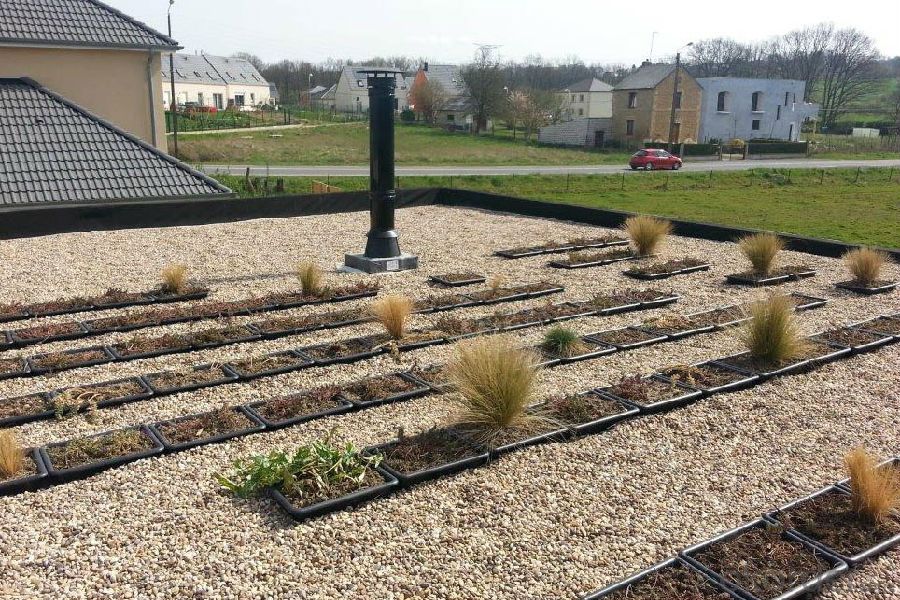

IMages of EPDM Waterproofing Membrane with Wool Back:
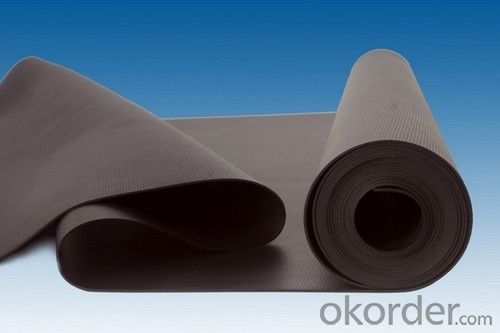
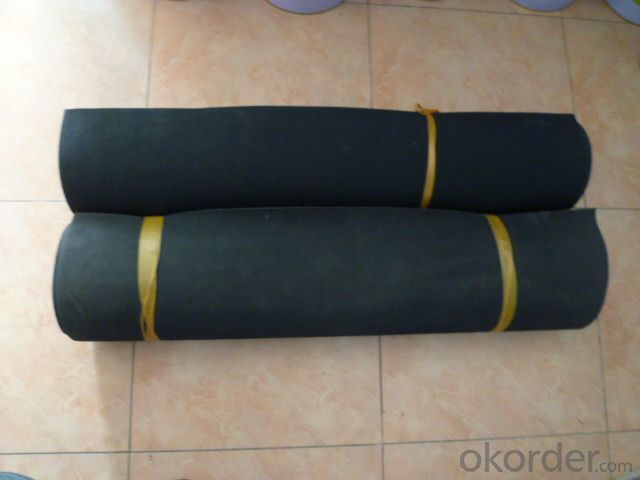


FAQ of EPDM Waterproofing Membrane with Wool Back:
1. What are we supplying?
We are specialized in producing Colorful Asphalt Roof Shingle, SBS/APP modified bitumen waterproof membrane, Self adhesive bitumen waterproof membrane, PVC waterproofing membrane, EPDM rubber roofing membrane, Single Component Polyurethane Waterproof Coating, and Spray Polyurea Waterproof Coating
.
2. How Many years experience do we have?
We have been exported to more than 20 countries in the past 15 years.
3. How long do we usually reply your request?
We always reply our customer within 24 hours.
- Q: Waterproof building materials after the construction of drums, bubble is what reason?
- Causes and prevention of drums: Cause 1: If the membrane waterproof layer if the site is not solid, there is moisture, sunlight or artificial heat in the impact of the internal volume expansion, resulting in drums, the formation of the size of the bubble. Preventive measures: leveling layer should be kept flat, clean, dry, grass-roots treatment agent should be brushing evenly, which is to prevent the drum from the main measures. Raw materials in the transport and storage process, should pay attention to moisture and water. To avoid the rainy day, fog, big wind climate conditions under construction, to prevent grass-roots moisture. When the roof base should not be dry, and anxious to paving the membrane, the use of exhaust roof approach (exposed single layer of waterproofing membrane should not be used).
- Q: Can a waterproofing membrane be used on breeze block surfaces?
- Yes, a waterproofing membrane can be used on breeze block surfaces. Breeze blocks, also known as concrete blocks, are commonly used in construction and have a porous nature. This allows water to seep through the blocks, potentially causing dampness or water damage in the building. To prevent this, a waterproofing membrane can be applied to the surface of the breeze blocks. A waterproofing membrane is a thin layer of material that is designed to prevent water penetration. It acts as a barrier, preventing water from seeping into the breeze blocks and protecting the underlying structure from moisture damage. The membrane is typically applied in liquid or sheet form and is adhered to the surface of the breeze blocks using an appropriate adhesive. Before applying a waterproofing membrane, it is important to properly prepare the breeze block surface. This may involve cleaning the surface and ensuring it is free from any loose debris or contaminants. Additionally, any cracks or gaps in the breeze blocks should be repaired prior to applying the membrane to ensure a seamless and effective waterproofing system. It is worth noting that the type of waterproofing membrane used will depend on the specific requirements of the project and the conditions the breeze block surface will be exposed to. There are various types of waterproofing membranes available, such as liquid-applied membranes, sheet membranes, or cementitious coatings. It is recommended to consult with a professional or manufacturer to determine the most suitable waterproofing membrane for your specific application. In conclusion, a waterproofing membrane can be used on breeze block surfaces to effectively prevent water penetration and protect the underlying structure from moisture damage. Proper preparation of the surface and selection of the appropriate membrane type are important factors to ensure a successful waterproofing solution.
- Q: Can a waterproofing membrane be applied on a vertical surface?
- Indeed, it is possible to apply a waterproofing membrane on a vertical surface. Vertical surfaces, including walls, foundations, and retaining walls, often benefit from the application of waterproofing membranes to safeguard against water infiltration and safeguard the underlying structures. These specialized membranes are formulated to adhere to vertical surfaces and establish a barrier that hinders water penetration. Commonly, they are applied utilizing various techniques such as spraying or rolling, and are suitable for both new construction and renovation endeavors. The utilization of a waterproofing membrane on a vertical surface is a reliable method to guarantee the long-lasting sturdiness and soundness of the edifice, preventing water-related harm.
- Q: Can a waterproofing membrane be used for a warehouse floor?
- No, a waterproofing membrane is not typically used for a warehouse floor. Instead, materials such as epoxy or concrete sealers are commonly used for warehouse floors to provide durability and resistance to heavy loads and foot traffic.
- Q: Can a waterproofing membrane be used for roofing?
- Yes, a waterproofing membrane can be used for roofing. Waterproofing membranes are commonly used in roofing systems to prevent water infiltration and protect the structure from leaks and water damage. They provide a durable and long-lasting solution for ensuring the roof's waterproofing capabilities.
- Q: Does a waterproofing membrane have any impact on the thermal performance of a structure?
- The thermal performance of a structure can be influenced by a waterproofing membrane. Usage of a waterproofing membrane is common in buildings to prevent water infiltration, which can harm the structure over time. By creating a barrier against moisture, the membrane helps maintain the building envelope's integrity and safeguards against potential leaks or water damage. Regarding thermal performance, a waterproofing membrane can enhance insulation by reducing heat transfer through the building envelope. By preventing moisture from entering the structure, the membrane also prevents condensation formation, which can lead to mold growth and further damage to building materials. Moreover, certain waterproofing membranes are designed with additional insulation properties, such as foam or reflective coatings, which further improve a structure's thermal performance. These membranes decrease thermal bridging and enhance energy efficiency by minimizing heat loss or gain through the building envelope. It should be noted that the impact of a waterproofing membrane on a structure's thermal performance can vary depending on the specific type of membrane, its installation, and the overall building design. Consulting a professional architect or engineer is advisable to determine the most suitable waterproofing solution that meets both water resistance and thermal performance requirements for a particular structure.
- Q: Can a waterproofing membrane be used for bridge decks?
- Bridge decks can benefit from the use of a waterproofing membrane. These decks are exposed to different weather conditions, including rain, snow, and humidity, which can cause damage and deterioration over time. To protect the bridge deck from water infiltration and related issues like corrosion of steel reinforcements, it is advisable to apply a waterproofing membrane on the surface. Waterproofing membranes are specifically designed to prevent water from penetrating the surface. They are usually made from materials like modified bitumen, thermoplastic, or liquid-applied coatings. These membranes are applied to the bridge deck surface, forming a seamless and watertight layer that stops water from seeping into the deck structure. Aside from preventing water infiltration, waterproofing membranes offer other advantages for bridge decks. They can help reduce the risk of freeze-thaw damage, guard against chemical attacks from de-icing salts or pollutants, and enhance the overall durability and lifespan of the bridge deck. Choosing the right waterproofing membrane for a bridge deck depends on several factors, such as the type of bridge, traffic conditions, climate, and expected service life. Therefore, it is crucial to seek advice from structural engineers and waterproofing specialists to select the most suitable membrane system for a specific bridge deck project.
- Q: Can a waterproofing membrane be used for underground stormwater detention systems?
- Yes, a waterproofing membrane can be used for underground stormwater detention systems. A waterproofing membrane is designed to prevent the penetration of water and can be applied to various surfaces, including concrete, to create a watertight barrier. This makes it an ideal solution for underground stormwater detention systems that require the containment and control of stormwater runoff. The waterproofing membrane ensures that the system remains watertight, preventing any leaks or seepage that could compromise the integrity of the system or contaminate the surrounding soil and groundwater. Additionally, the membrane can also help to protect the concrete structure of the detention system from the corrosive effects of water and other potential contaminants. Therefore, using a waterproofing membrane in underground stormwater detention systems is a reliable and effective way to ensure their functionality and longevity.
- Q: Can waterproofing membranes be used on loading docks?
- Yes, waterproofing membranes can be used on loading docks. Waterproofing membranes are commonly used in various construction projects to prevent water infiltration and protect the underlying structure. Since loading docks are exposed to rain, snow, and other weather conditions, applying a waterproofing membrane can help to keep the dock area dry and prevent water damage.
- Q: Can a waterproofing membrane be used in areas with high groundwater levels or flooding?
- The utilization of a waterproofing membrane is viable for areas with elevated groundwater levels or occurrences of flooding. These membranes are specifically designed to create a barrier against water infiltration, effectively safeguarding structures from water-related harm. Commonly composed of materials like bitumen, rubber, or synthetic polymers, these impermeable membranes are applied to foundations, basements, roofs, and walls to impede water penetration. In regions where groundwater levels are elevated or frequent flooding is experienced, the use of a waterproofing membrane becomes even more essential. Functioning as a protective layer, this membrane prevents water from permeating the structure and causing potential damage. It guarantees that the building's interior remains dry and devoid of water-related issues such as mold, mildew, and structural deterioration. However, it is crucial to consider the specific circumstances of the site, including the level of groundwater or severity of flooding. In extreme cases characterized by high water pressure or prolonged flooding, additional waterproofing measures may be required. These measures could involve the installation of a drainage system or the utilization of thicker and more durable membranes. To ensure the suitable membrane system is selected and installed correctly for the unique conditions of the site, it is advisable to consult with a professional waterproofing contractor or engineer.
Send your message to us
EPDM Waterproofing Membrane with Wool Back
- Loading Port:
- Shanghai
- Payment Terms:
- TT OR LC
- Min Order Qty:
- 50000 m²
- Supply Capability:
- 5000000 m²/month
OKorder Service Pledge
OKorder Financial Service
Similar products
Hot products
Hot Searches
Related keywords







